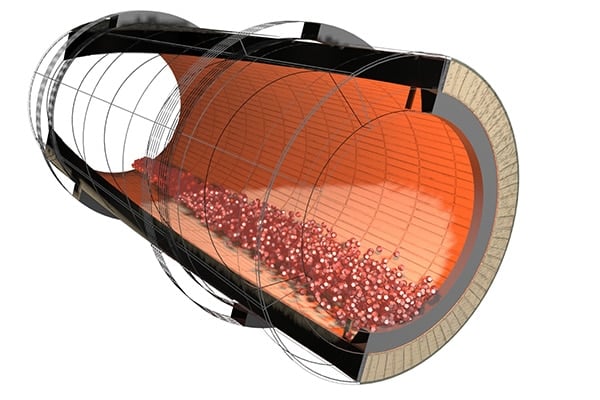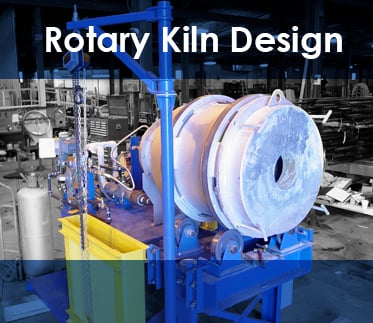Rotary kilns are integral to modern industrial processing, providing a controlled means of initiating chemical reactions and phase changes. As they are highly flexible and can be used to process hundreds of different materials, optimizing the performance of a rotary kiln around the process and material at hand is an important aspect of kiln design. Many customizations are available to tailor a kiln’s design to meet the precise processing needs.
In some cases, it may be necessary to increase the retention time or bed depth in a rotary kiln. This is done by adding what is called a “dam.”
Dams can be integrated into the design of a new kiln in order to allow for retention time to be increased without adding additional length to the kiln. Similarly, a dam may be retrofitted into an existing kiln if the process conditions have changed, requiring an increase in retention time, throughput, or adjusting bed depth that was not accounted for in the original design.
How a Rotary Kiln Dam Works
A dam in a rotary kiln works much like a dam in a river; material builds up behind the dam, forcing retention time and bed depth to increase. Material then spills over the dam, and discharges from the rotary kiln.
Since most kilns utilize a counter current air flow, end dams are the most commonly employed type of dam. End dams serve to hold the material where the air is warmest (at the discharge end in a counter current kiln) for maximum heat transfer.
 |
| Figure 1.
Shown here is an end dam. Dams are put in place when retention time needs to be increased using the same size rotary kiln. Dams allow the loading to be increased, which increases retention time and bed depth by forcing the material to build up in the rotary kiln. |
If a discharge end dam is not sufficient, an internal dam can also be used.
Conclusion
Rotary kilns are an invaluable thermal processing device in modern industry, but their performance is largely dependent on optimizing their design around the unique challenges of the process at hand. Dams are a common customization used to increase bed depth and/or retention time to better meet the needs of a process.
FEECO is a leader in advanced thermal processing design and equipment. We utilize the many batch- and pilot-scale kilns in our Innovation Center to gather process data and engineer and manufacture a custom commercial-scale unit of the highest quality around the precise needs of the process. For more information on our thermal testing or custom rotary kilns, contact us today!



